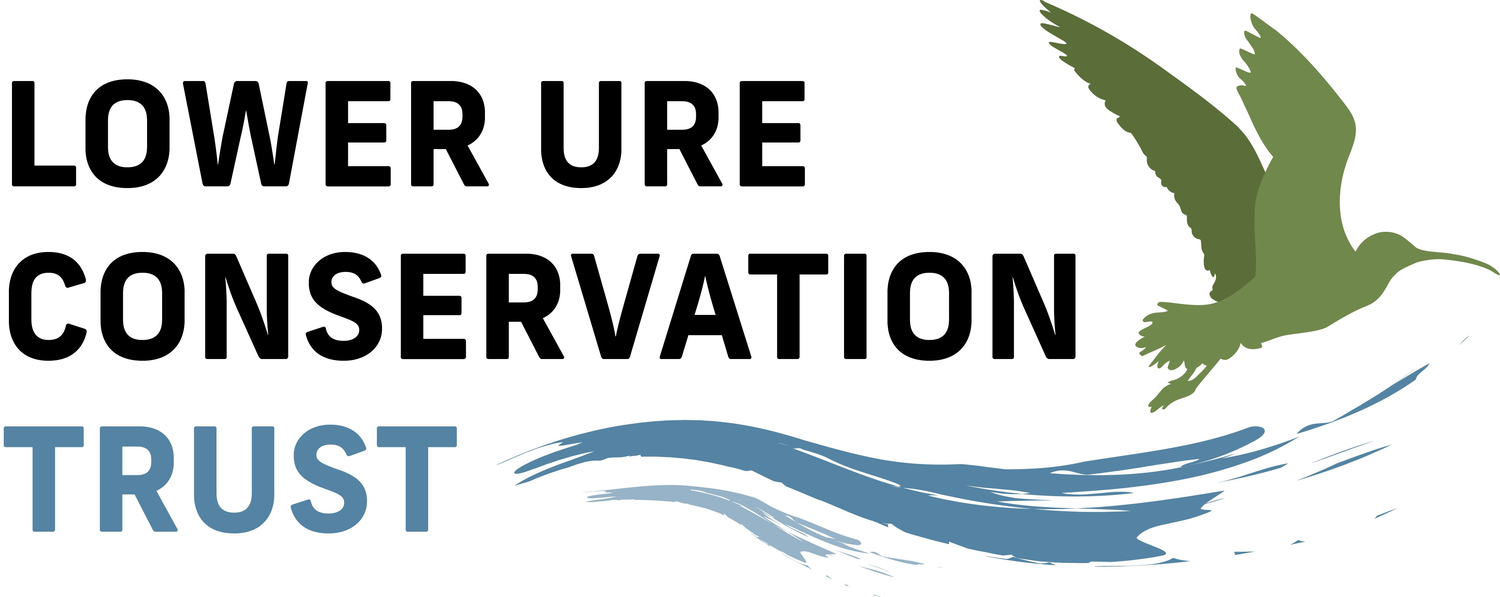Lower Ure Conservation Trust
Nosterfield Bird and Natural History Review
October 2023
by Andrew (Andy) M Hanby
Out at the flaming reserve again- David Saunders
The first day of the month started with a few notables, particularly 18 Dunlin moving south-west. Ones and twos of this species have been present throughout the autumn, but more substantial flocks have been infrequent. Other notables on this date included a Green Sandpiper and Cetti’s Warbler.
Cetti’s Warbler seems to have become a more permanent fixture in the recording area and throughout the month it became apparent that there were three regular birds; at the nursery, the reedbed and Ladybridge Lake respectively. In my youth, Stodmarsh was the place to see these birds and if there was a cold winter, they would be wiped out and then slowly return. It is a measure of climate change that they have expanded so far north and sustain their presence.
On 2nd, two Whooper Swans flew over Flasks Lake, our earliest autumn birds in recent years and as always, a cheering sight. The supporting cast was also of high quality, with Bittern in the reedbed for the first of several appearances from then onwards, with a Grey Plover on the Flasks Lake silt. Marsh Harrier and the ever (un)popular Red-crested Pochard also performed and continued to do so on and off throughout the rest of the month.
After a few steady days, visible migration cranked into action after a period of easterly winds, highlights including 6713 Redwing, 631 Meadow Pipit, and 30 Swallows included in the grand total of 7655 birds moving south. Six Barnacle Geese also dropped in, making it a thoroughly entertaining day.
Winter thrushes - Redwing Mike Smithson
Fieldfare Andy Hanby
The following day visible migration was again noticeable, but at a greatly reduced rate - a fine adult male Merlin flew south and a Great White Egret on Ladybridge Lake kept up the quality.
However, 11th was a truly excellent day. A magnificent total of 50 Whooper Swans in five herds flew over south and a further ten were on Langwith Lake. Also present was a female Merlin, Stonechat, four Chiffchaffs and a late Wheatear.
Particularly cheering however, were two Tree Sparrows and a count of 21 Grey Partridge, both species of conservation concern. The latter in particular, are doing well in the area, with several high counts this month, the best being 40 in the main reserve/Middle Henge area on 15th.
On 12th, the Stonechat count had risen to two, whilst on 13th a Blackcap and a count of 21 Yellowhammer were handsome additions to the month’s birding ledger.
Another Grey Plover turned up on 16th, as well of our first Great Black-backed Gull for a while and a late White Wagtail.
Arguably, the second-best bird of the month turned up on Langwith Lake on 17th, a Red-throated Diver. Unfortunately, or so it appeared, it was a brief visit as the diver soon disappeared. Remarkably, the next day one was found by a main road a few miles away. Itseemed to be reasonably healthy and was released on to Flasks Lake. It was not seen the next day, but on 20th a ‘diver sp’ was reported flying south over the Reserve. It would be easy to interpret this all as representing one bird and even speculate that the released individual was the bird that appeared at Angler’s Country Park on 21st October and has remained there ever since. However, a number of divers appeared at other inland sites from the Midlands northwards around this time, and therefore there is not complete certainty on this interpretation.
The released Red-throated Diver looking reasonably healthy Gareth Jones
A reminder of what fine birds our local Kestrels are Mike Smithson
Also on 20th the Nosterfield area played host to Grey Plover, Bar-tailed Godwit, a juvenile Little Gull, Great Black-backed Gull and Chiffchaff and on 21st, our latest ever Osprey flew south and what was almost certainly the same bird was seen over Farnham Gravel Pits an hour later.
So, what was the best bird of the month….. well, 22nd was reserved for that and a welcome reward for our hard-working Project Officer Emma - the second-ever Great Grey Shrike for Nosterfield, verified by a great voucher photograph. The bird was not seen again, so it is fair to say we were all 'gripped off'!
The month’s star bird, the Great Grey Shrike Emma Higgs
A Tawny Owl was hooting by the Reserve car park on 23rd, a Bearded Tit foraged in the nursery fen on 25th and a swarm of waders on the Flasks Lake silt on 26th included 50 Dunlin and two Grey Plover.
More ‘vis mig’ action on 27th included two late Swallows, 904 Fieldfare and one Crossbill flying south, with a further three Crossbill south the next day. Thrushes were packing the area to the gunnels on 28th, with nearly 2000 Fieldfare on the ground and others going over.
A single Chiffchaff on 29th was a good find and a report of a ‘tristis’ Chiffchaff the same day could potentially be neither - but with no finder’s name attached or other evidence, it may prove to be one that got away.
The month ended quacktastically, with both Common Scoter and Scaup present!
Andy Hanby 8/11/2023







